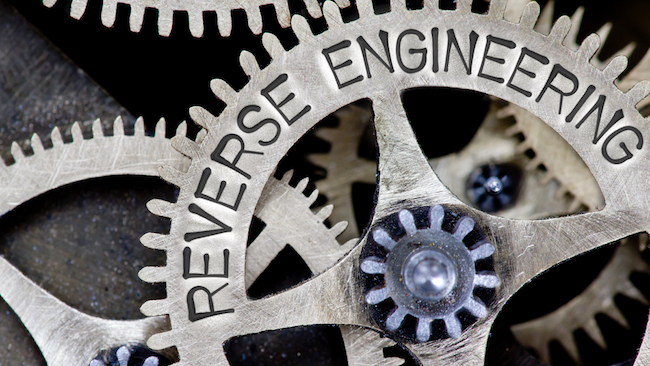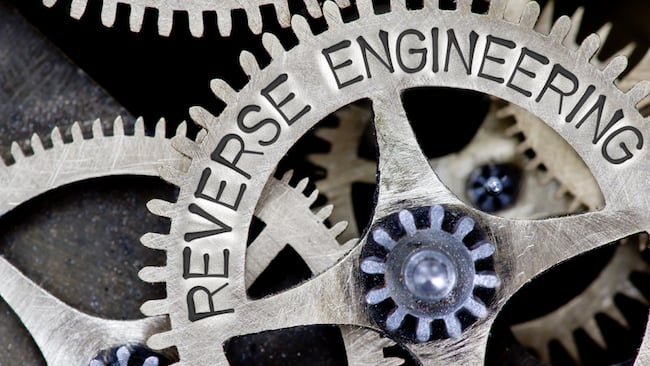
 turn those gears backwards to work out what you need
turn those gears backwards to work out what you need
It is vital to determine well in advance of heading to any location — regardless of the pressure of demanding clients or real-world danger — the specific gear I’m going to need to accomplish my mission. And there’s only one effective way to do that: reverse engineering. By Jody Eldred.
In our context, reverse engineering begins with the end. What is the end-product I am creating, who will see it and how will it be shown? Is it a feature film? A documentary? A wedding video? Will it be shown on broadcast TV? In theatres? Only on the web and if so, in SD, HD or UHD? On DVDs and if so, SD or Blu-Ray? Streaming and if so, in SD, HD, or UHD? The end-product, who will see it and how it will be seen, are the starting points for determining what tools you will need — the kit you will need — to create it. We must break it down to understand how to create it. We must reverse engineer it.
This all may seem rather obvious, but I cannot count the number of times I have been asked, “What is the best camera?” That question is the LAST question to ask, not the first.
An example:
I will be shooting a documentary. It will be shown on network TV in HD.
Questions you need to ask:
Does the network want to originate in UHD to future-proof their product?
If YES, then I need to shoot with a 4K (UHD camera.)
If NO, then HD is acceptable.
Will I be shooting run-and-gun? If YES, then I need a camera capable of an ENG-style zoom lens with power zoom servo and probably not a large-sensor camera as shallow depth-of-field in run-and-gun will have me chasing focus all day long — 2/3” is preferable. And a camera I can mount on my shoulder with a good EVF for critical focus and exposure is important. (Do I really want to hold a camera with a flip-out screen or tiny rear EVF in front of me all day long?)
Will I be shooting shallow depth-of-field interviews and beauty shots?
If YES, then I need a larger-sensor camera, like Super35, and faster lenses to achieve the shallow depth-of-field to make those interviews and beauty shots, well… beautiful!
Will I be shooting both run-and-and gun AND the beauty shots?
If YES, then I probably will need two different camera systems. (See above.)
Does the production company intend to do colour grading and if so, do they have the budget and delivery schedule, so we can shoot in Log (or maybe even compressed Raw) to use the camera’s much greater dynamic range and wider colour gamut? (Rec.709 is only around seven stops DR, while most Log is closer to 12 or 13. Shooting Log and Raw saves a lot of time in very contrasty environments, reducing the need to ND windows and enabling shooting in the shade with a bright background using fewer lights, for example.)
If YES, then get a camera that shoots Log or Raw.
If NO, make sure the production company and post are well-informed as to the ease of shooting Log and Raw nowadays. Depending on the camera, file sizes are VERY manageable, grading in Resolve is a snap and the results can be very cinematic.
Will I need to use a gimbal?
If YES, then pick a camera that’s not too large or heavy and can easily be balanced, and the lens of which (focus and exposure) can easily be controlled.
If NO, then no worries!
(NOTE: You may want a second camera for gimbal work, like a lightweight Sony A7SII. Switching from handheld or tripod to a gimbal is quite time-consuming. A dedicated gimbal camera is a far better solution.)
There are a lot of very capable camera systems out there. Some are quick and simple, others more sophisticated and complex. Some are designed for use primarily on tripods, others work great handheld. Some are difficult for handheld, difficult to compose/expose/focus in bright sunlight. Some do both well. Choose wisely.
There are whole other conversations about whether to buy or rent, which tripods, lenses, grip and lighting might work best for you. We can have that conversation as well.
But for now, reverse engineer your project. Start at the end and work backwards to determine what will best fulfil your mission.
Gear graphic: Shutterstock.com
Tags: Production



Comments